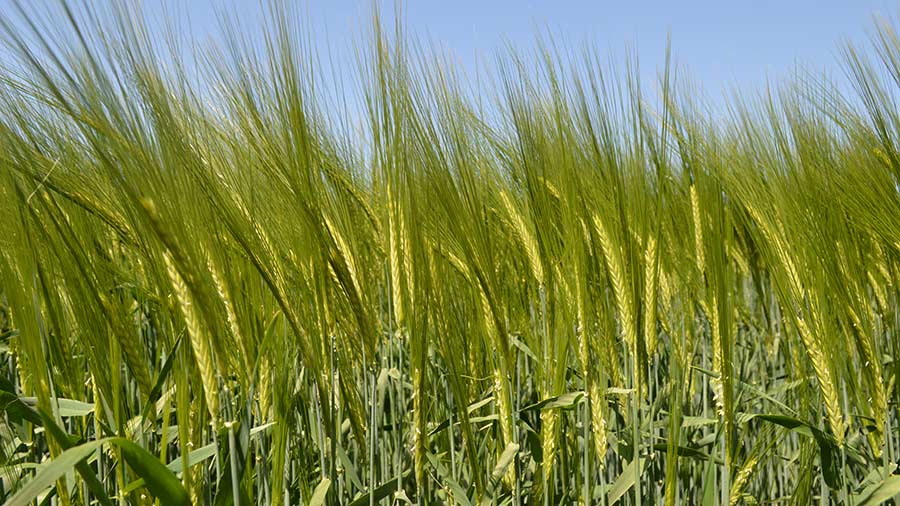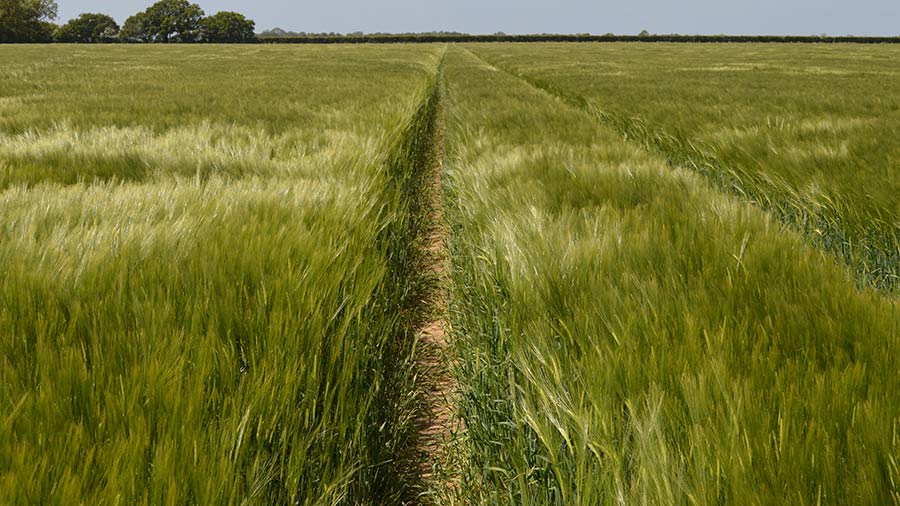Harvest 2023: New winter barley impresses in Yorkshire
 © David Jones/MAG
© David Jones/MAG Yorkshire Wolds grower Mark Ullyott is impressed with the new winter barley variety Caravelle, saying it is the best seed crop of barley he has grown for more than 10 years and he will be growing it again this coming season.
The two-row feed variety yielded 8.5-9.5t/ha this harvest, the specific weight held up with no sprouting, and the straw came off well, all of it used at Langtoft Grange Farm, near Driffield.
“If we could, we would put all of our acreage down to the variety,” says Mark.
See also: New winter barley impresses on disease resistance and yields
The variety joined the current AHDB Recommended List (RL) at the end of last year as the top yielding two-row feed winter barley and the first two-rower to match the yield of the hybrid six-row barleys.
Two fields

© MAG/David Jones
Mark grew two fields of the variety – one following vining peas and drilled on September 28 at a standard seed rate of 300 seeds/sq m, and the second after potatoes on October 23 with a slightly higher rate of 350 seeds/sq m.
Both fields established well, and the crops stayed clean of disease using the farm’s standard T1 and T2 fungicide programme and received 160kg/ha of liquid nitrogen – slightly reduced due to the increased fertiliser costs at the time.
As it is a fairly tall variety, Mark used the plant growth regulator (PGR) chlormequat, but thinks that next time the crop would benefit from another PGR later in the season, just to reduce its height.
He did note that straw strength was good and he didn’t have lodging or brackling concerns.
Both fields were ready to harvest by the third week of July, but wet weather meant the field following the vining peas was cut on July 31 and the second field a week later, again due to rain delays.
Two-rows on a roll
Ron Granger, arable technical manager at Caravelle’s breeder, Limagrain, says winter barley growers who have been growing hybrids might be interested in returning to two-rows because of the variety’s performance.
“Hybrids account for about 20-25% of the winter barley market but this could change,” he says.
The two-row variety has shown high yields across a range of conditions, emphasised by the good yields delivered in the wet spring and summer of this year.
Its RL fungicide-treated yield of 106 is ahead of the next-best two-rower, Bolivia, at 104, and matches the best of the six-rowers.
The variety’s yield potential is backed up by a high specific weight at 71.8kg/hl, surpassed only by Cassia.
It has a solid disease resistance profile with a 7 for mildew, a 6 for rhynchosporium and a 5 for net blotch, on a 1-9 scale where 1 is susceptible and 9 shows good resistance.
This is backed up by the variety having the second-highest untreated RL fungicide yield of 89, just behind Lighting on 90.

